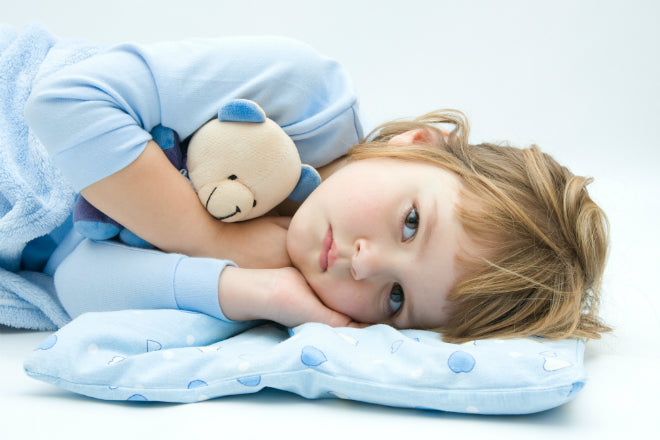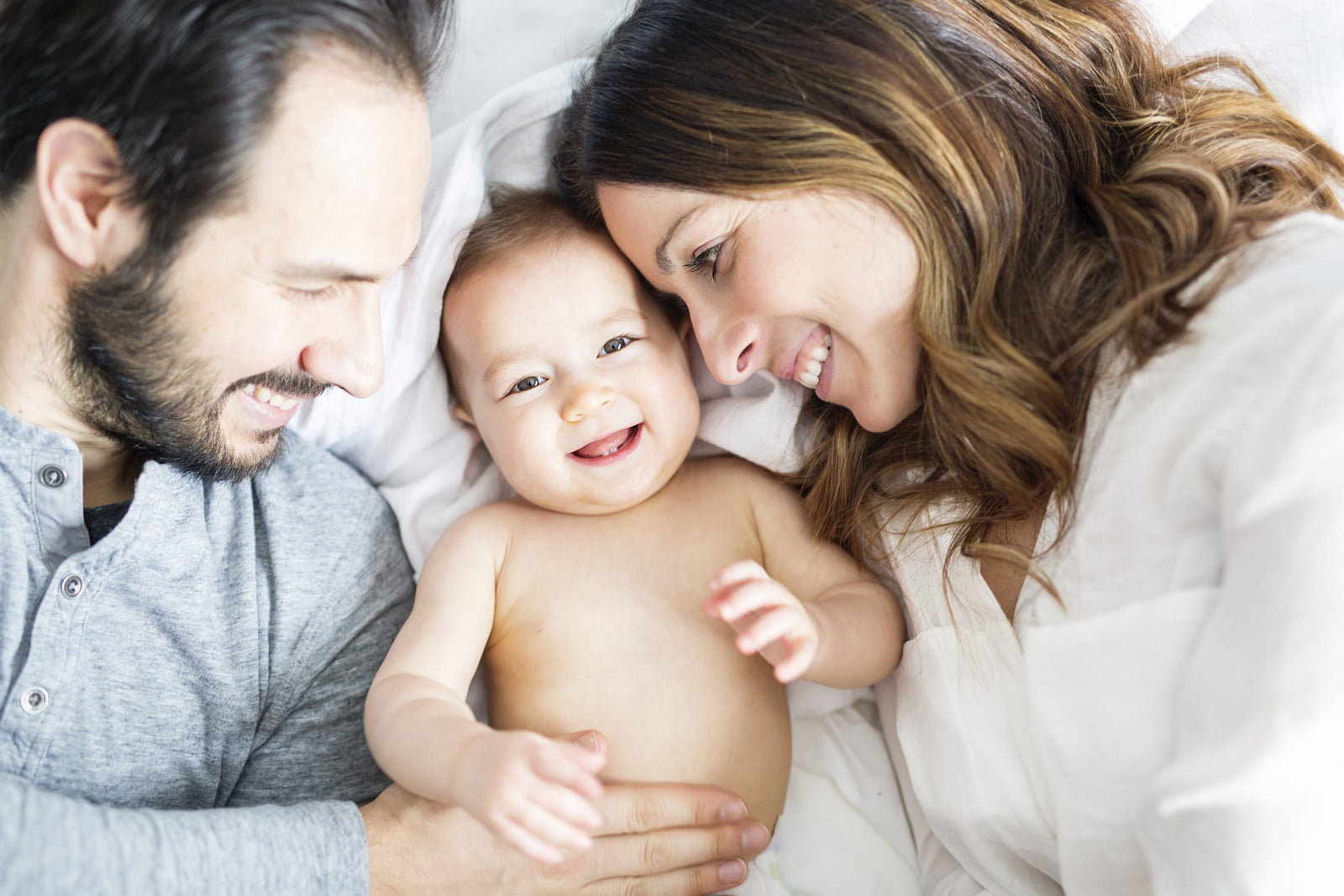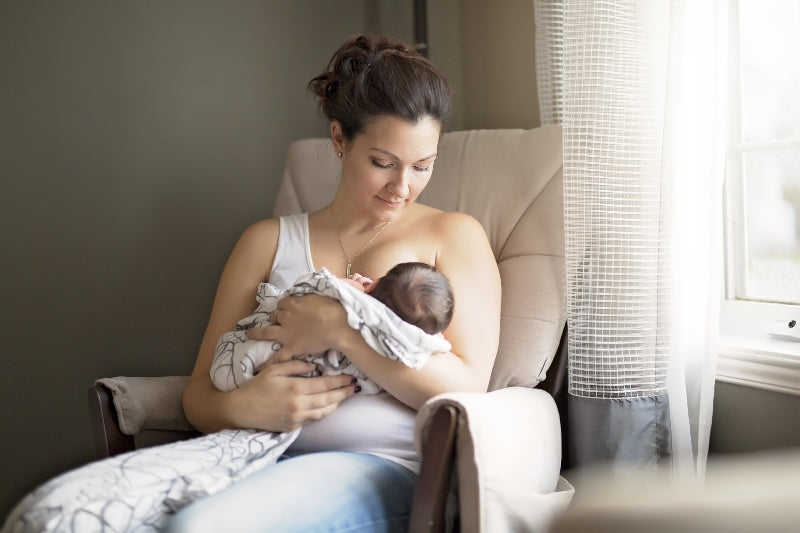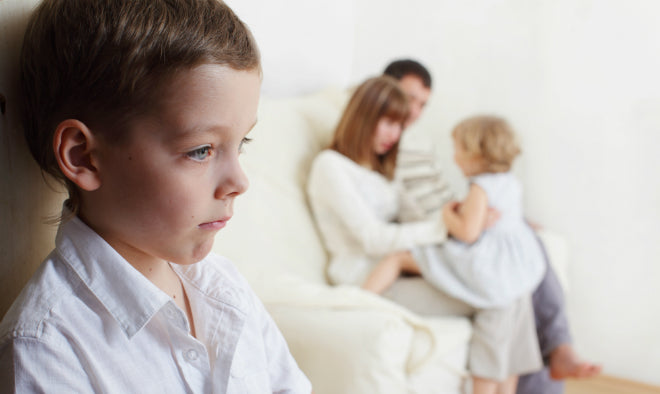" Don't panic if you have crying fits at night "
A sight that leaves parents at a loss: The child is standing in bed and seems beside himself with fear. It stares at you. Bathed in sweat, trembling and completely absent, your child doesn't even seem to recognize you. Every attempt to calm him down fails. The night terror - also known as Pavor Nocturnus - strikes. And it disappears just as quickly as it came. But what exactly is this phenomenon?
The night terror - more harmless than it seems

First of all: be reassured! The event is nowhere near as bad as it may seem at first. From a purely medical point of view, Pavor Nocturnus is not dangerous. There is no physical or mental damage to the little ones. The child poses the real danger to itself by accidentally hitting itself or bumping into the edge of the bed. You can take precautions after such a night and, for example, put a cozy blanketin the bed.
Who is affected?
It has not yet been scientifically clarified what exactly triggers this night terror. The fact is that it mainly affects children between the ages of two and six, but night terrors can also occur in babies. Such a seizure has not yet occurred before the age of nine months. It often occurs in children in the first half of their sleep. At a time before dreaming, i.e. before the so-called REM sleep phase.

Children aged 2 - 6 are particularly affected by night terrors and nightmares
It has been proven that boys are more frequently affected by this sleep disorder than girls. If it occurs once, it is usually quickly forgotten. However, if you notice that your child or baby suffers from it again and again, then a short visit to the pediatrician is recommended. They will be able to clarify whether there are any serious sleep disorders and whether there may be a medical cause. Night terrors are not considered a real sleep disorder in this sense.
What is the best way for parents to react to night terrors in children?
Even if it goes against natural instinct and may be difficult for you: don't hold your baby or toddler in your arms. Do not try to hold them. As your child is between waking and sleeping, they cannot react to external influences.
You have little control, but make sure that your child does not accidentally injure themselves.
Such a seizure can last for different lengths of time. As suddenly as the Pavor Nocturnus strikes, the spook is over again. For parents, however, the experience may be shocking, as they have never seen their baby or child like this before.
What is the difference between a nightmare and a night terror in children?
Basically, there are two main characteristics that clearly show you what you are dealing with.
The nightmare is consciously perceived by the child
A bad dream, for example, wakes a child up completely. It is wide awake and can usually still remember details from the dream. You can give your child a hug and comfort them. Bad dreams usually haunt the youngest children for some time. It is not uncommon for little ones to be afraid to go to sleep. For fear of having another bad dream. In this case, you can attach a homemade dreamcatcher. According to Native American legend, evil thoughts and spirits get caught in the net and only good things can get through. Whether this is true or not remains to be seen - but at least dream catchers create a cozy atmosphere that helps you fall asleep. These accessories are very decorative and can be easily made with craft materials such as craft beads beads.

The night terror is perceived by the child unconsciously / not at all
The situation is different with night terrors. As children simply do not experience this consciously, they no longer remember it.
Are there methods to prevent this phenomenon?
Unfortunately, the night terrors cannot be prevented or even stopped altogether. This is also due to the fact that pavor nocturnus is not a sleep disorder in the medical sense. Nevertheless, there are a few methods for you as parents to reduce the chances of such an incident happening. If it turns out that your little angel is affected, make sure they have a soft and cozy sleeping environment. As soon as your little one is no longer a baby, you can put a few more cozy blankets in the bed. Additional pillows also provide more comfort. It is also important that there are no toys or other objects on the floor. Sometimes the little ones even stand up. Similar to sleepwalking. For this reason, make sure you secure windows and stairways.
Avoid sleep deprivation, restlessness and stress
In the search for possible triggers, parents repeatedly come across a lack of sleep as a cause. Babies and toddlers still spend a lot of time sleeping. It is only when they get older that the required rest is limited to the night and a short nap during the afternoon. If your child does not get enough sleep, this can at the very least increase the likelihood of night terrors. It is therefore essential to establish a calm and consistent rhythm in the evening hours wherever possible. Routine creates trust and security. Babies and toddlers in particular need this. Avoid stress and hecticness in the late afternoon and early evening hours as far as possible.
 Calm sounds, reading aloud and dimmed lights are important before bedtime. Your little sunshine will calm down and be able to relax. Try, for example, the harmonious sounds of a baby music boxwhen your little one is put to bed. Not all little ones sleep the same amount at the same age. Nevertheless, nights with less than 9 or 10 hours of sleep are too little. If you have to get up early for work and your little sunshine goes to nursery, then make sure you put him or her down on time in the evening - this way you can significantly reduce the risk of a night-time startle.
Calm sounds, reading aloud and dimmed lights are important before bedtime. Your little sunshine will calm down and be able to relax. Try, for example, the harmonious sounds of a baby music boxwhen your little one is put to bed. Not all little ones sleep the same amount at the same age. Nevertheless, nights with less than 9 or 10 hours of sleep are too little. If you have to get up early for work and your little sunshine goes to nursery, then make sure you put him or her down on time in the evening - this way you can significantly reduce the risk of a night-time startle.










